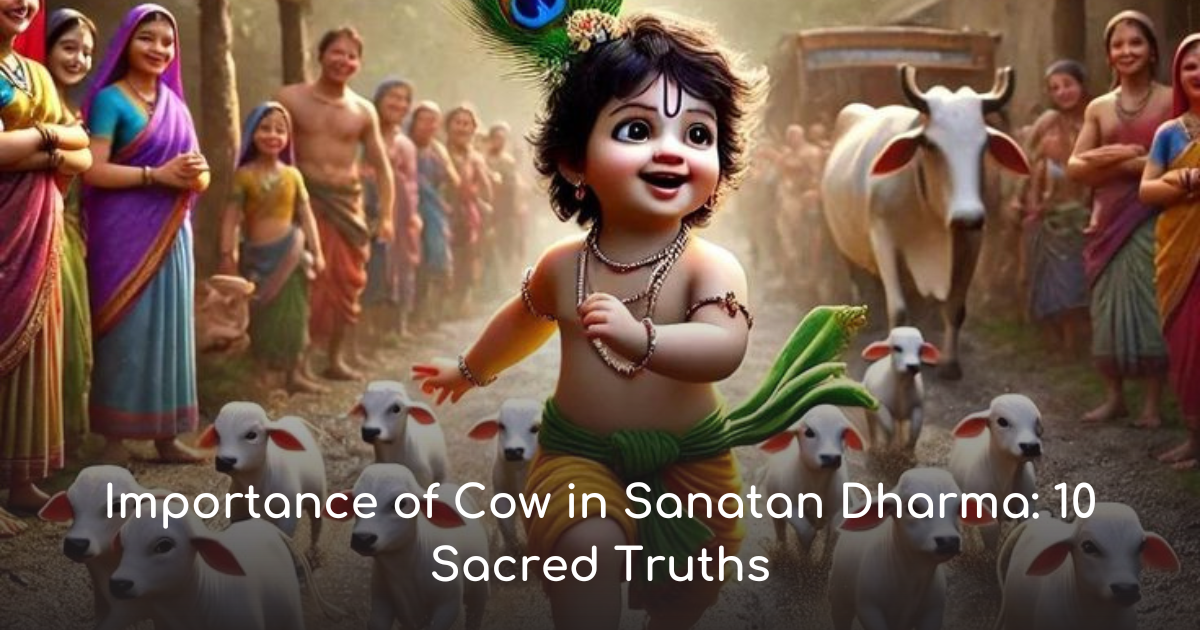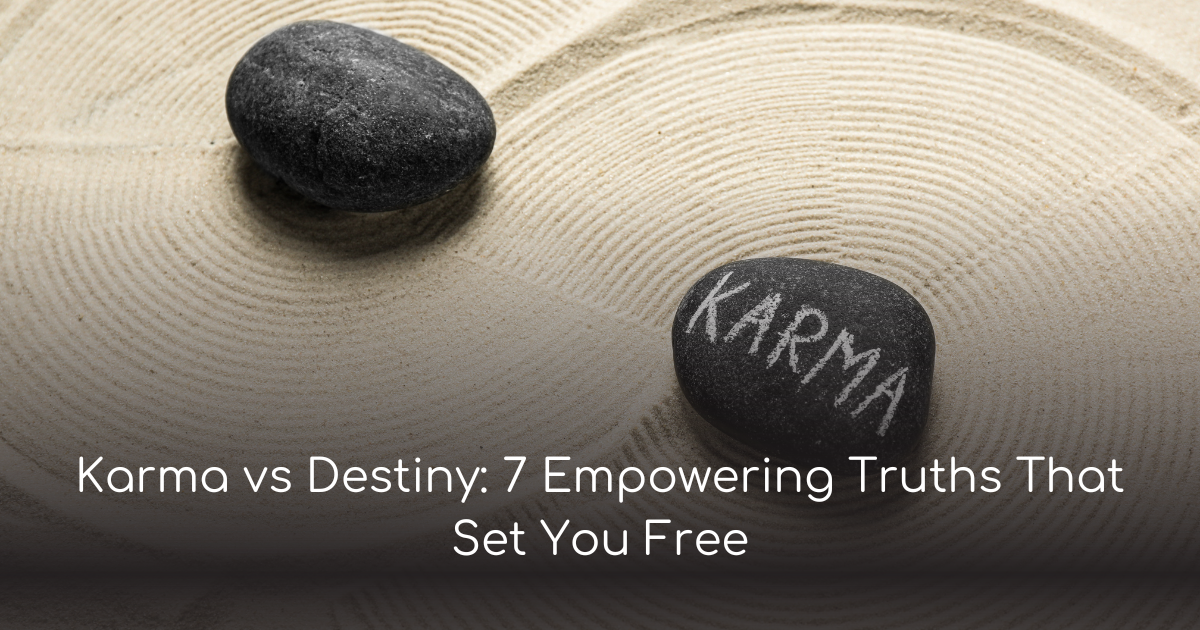ayurveda in sanatan dharm: 7 sacred truths for 2025

Ayurveda in Sanatan Dharm reveals sacred wisdom on health, harmony, and healing. Discover 7 timeless truths awakening pride in your Dharmic roots.
Rediscovering the Roots of Dharmic Healing
“When the soul walks with nature, the body remembers its divine rhythm.” – SanatanYug Wisdom
🔱 Introduction: A Seeker’s Calling
Ayurveda in Sanatan Dharm is not just a method to heal the body—it is a mirror to awaken the soul.
O seeker, ask yourself:
-
Why does the world suffer from diseases the Rishis never knew?
-
Why does the body cry when the soul forgets its rhythm?
-
And why is it that our ancestors, living under trees and stars, knew more about health than most modern doctors?
Because they lived by Sacred Truths. Eternal, unchanging, divinely revealed truths that connect Ayurveda to the very pulse of Sanatan Dharm.
In this 3-part journey, we’ll rediscover those 7 Sacred Truths that can transform your health, your home, and your dharma in 2025 and beyond.
🌸 Truth 1: Ayurveda is Not Man-Made, It is Divine Revelation
“Ayurveda is eternal because it is born of the eternal Veda.” – Charaka Samhita
The first sacred truth is this: Ayurveda is not a creation. It is a transmission.
It was not invented, it was revealed—by Lord Brahma, passed down to Daksha Prajapati, then to Ashwini Kumars, and later to Lord Indra, who gave it to Maharishi Bharadwaja.
Ayurveda is thus a shruti, a sacred hearing. It is Upaveda—a limb of the Atharva Veda—the Veda of life, herbs, and health.
The Rishis didn’t "study" nature—they listened to her. They meditated until Prakriti herself whispered her secrets.
“O seeker, your body is not a machine—it is a mandir. Treat it with reverence.”
🔆 Key Elements:
-
Ayurveda’s roots in Atharva Veda
-
Lord Dhanvantari as the Devata of Ayurveda
-
Healing is seen as dharma, not commerce
In 2025, let us not treat Ayurveda as a “natural alternative,” but as divine inheritance.
📜 Truth 2: Health is the First Step Toward Moksha
“Shariram khalu dharmasadhanam” – The body is truly the instrument of Dharma. – Mahabharata
In Sanatan Dharm, health was never the goal—it was the foundation.
The Rishis knew:
-
Without a healthy body, you cannot do sadhana.
-
Without a calm mind, you cannot do dhyana.
-
Without inner balance, you cannot serve dharma.
Thus, Ayurveda is a spiritual practice—not just a science of herbs, but a path to higher consciousness.
🧘♂️ Triguna and Tridosha: The Inner Science
-
Vata, Pitta, Kapha = bodily principles
-
Sattva, Rajas, Tamas = mental principles
Together they define your prakriti—your personal dharmic design.
“An Ayurvedic life is a sattvic life—pure in food, thought, sleep, speech, and touch.”
In 2025, health must be reframed—not as immunity, but as inner alignment with cosmic law (Rta).
🪔 Truth 3: Ayurveda Lives in Daily Dharma, Not Just Medicines
“Live by the sun, rest by the moon, eat from the Earth, heal by the Spirit.” – Vedic Insight
Today, people search for cures. But Ayurveda teaches: prevention is better than panic.
This truth reminds us: Ayurveda lives in your daily rhythm—your Dinacharya.
🌄 Dinacharya: The Sacred Daily Routine
-
Brahma Muhurta waking for clarity
-
Oil pulling and tongue scraping to cleanse toxins
-
Abhyanga (oil massage) to nourish tissues and pacify doshas
-
Sattvic breakfast, eaten with gratitude
-
Sunlight, breathing, silence, and simplicity
🌿 Ritucharya: Aligning With Seasons
-
Eating, thinking, and acting in rhythm with nature’s cycles
-
Avoiding cold foods in winter, spicy foods in summer
-
Fasting on Ekadashi or seasonal transitions
“Your body is a clock set to the universe. Live by its sacred timing.”
In 2025, as the world seeks structure in chaos, Ayurvedic living offers not control, but surrender—to rhythm, simplicity, and dharma.
Dear sadhak,
These truths are not "ideas"—they are forgotten memories of your soul.
-
You are born from the Vedas.
-
Your body is a vessel of dharma.
-
Your health is a sacred trust.
This is not a wellness trend. This is Ayurveda in Sanatan Dharm.
A sacred science, guiding you home—to your roots, your prakriti, your dharma.
🌿 Recap: First 3 Sacred Truths
| Sacred Truth | Essence |
|---|---|
| 1. Divine Origin | Ayurveda is Vedic, eternal, and divinely revealed |
| 2. Health = Dharma | Body and mind must be purified for spiritual liberation |
| 3. Dharma in Daily Life | Living Ayurveda is living in cosmic rhythm |
Sacred Custodians: Temples, Saints & Healing Vibration
“The one who walks the path of Ayurveda without bhakti walks with only half his strength.” – Ancient Vaidya Saying
🌺 Truth 4: Temples Were the First Ayurvedic Healing Centers
In the ancient dharmic civilization, temples were not just places of prayer—they were ecosystems of spiritual and physical healing. The divine, the medicinal, and the cultural were never separate.
🛕 Temples as Sanctuaries of Health
Temples like those at:
-
Thottuva (Kerala) – home to Lord Dhanvantari
-
Kanchipuram and Rameshwaram – known for healing theerthas
-
Chidambaram and Madurai – where Vaidyas and priests worked side by side
Here, Ayurveda was not treated, it was lived:
-
Daily rituals aligned with Dosha-balancing Dinacharya
-
Prasadam prepared as sattvic food therapy
-
Temple gardens (Nandavans) grew medicinal herbs
-
Festivals aligned with seasonal detoxes (Ritucharya)
“To walk barefoot into a temple was to reconnect with Earth. To take prasadam was to realign with Prakriti. The temple was Ayurveda in action.”
🌿 Dhanvantari: The Divine Vaidya
Emerging from the churning of the cosmic ocean, Lord Dhanvantari appeared holding the Amrit Kalasha. He is not a myth—he is the living principle of eternal health.
Temples dedicated to Dhanvantari often became Ayurvedic knowledge centers, where Vaidyas studied shastras and served communities—free of ego, free of charge.
In 2025, as wellness becomes commercialized, the temple model reminds us:
Healing is seva, not service. It is dharma, not business.
🔱 Truth 5: Saints and Sages Were Living Embodiments of Ayurveda
“The true Vaidya is one whose body is sattvic, whose mind is shuddha, and whose speech is mantra.” – Charaka Samhita
Ayurveda was not preserved in books—it was embodied in saints.
They lived in forests, walked barefoot, fasted with the moon, and knew exactly what herb to pluck, when, and how. For them, healing was dhyana (meditation) in action.
👣 The Lineage of Ayurvedic Rishis
-
Maharishi Bharadwaja – received Ayurveda from Indra after deep tapas
-
Atreya and Charaka – developed internal medicine (kayachikitsa)
-
Sushruta – father of surgery, with divine insight into anatomy
-
Sage Patanjali – who merged Ayurveda and Yoga into one path of balance
They lived by natural law. They were healers not by degree, but by brahmacharya, tapasya, and ahimsa.
🕯️ Modern Saints Who Revived Ayurveda
-
Swami Sivananda, a medical doctor-turned-monk, taught millions to heal through sattva, silence, and service
-
Acharya Balkrishna and Swami Ramdev, who helped bring Ayurveda back into public consciousness
-
Countless Vaidyas working in silence across Bharat, continuing the rishi-parampara
“A saint does not just prescribe ghee. He blesses it.” – Sanatan Healing Philosophy
🧘♂️ Saints Practiced What Ayurveda Preached
-
Fasting on Ekadashi
-
Walking barefoot on grass at sunrise
-
Using food as medicine and prayer
-
Aligning their speech, thoughts, and deeds with sattva
In 2025, when the world looks for doctors, let us also seek gurus—those whose lives are ayurvedic even in silence.
🎵 Mantra as Medicine
Ayurveda recognizes that sound is a form of subtle medicine.
Where herbs touch the body, mantras touch the soul.
-
Maha Mrityunjaya Mantra – the great death-conquering chant
-
Dhanvantari Stotra – for vitality and health
-
Gayatri Mantra – for clarity and purity of mind
📿 Healing Through Vibration
Modern science now confirms:
-
Sound impacts cellular healing
-
Chanting reduces stress hormones
-
Repetition of sacred sounds brings neurological coherence
“When you chant with devotion, your very breath becomes your medicine.”
In the Rishi traditions, every medicine was energized with mantra, every herb was awakened with gratitude, and every patient was reminded of their inner divine power.
In 2025, where diseases of the mind are rising faster than those of the body—mantra and meditation are no longer options, they are necessities.
Seeker, understand this truth deeply:
The Rishis did not just write the Ayurvedic texts.
They became them.
And the temples were not places to escape life, but to learn how to live.
As you reconnect with these truths:
-
Worship Lord Dhanvantari with your lifestyle
-
Read from the shastras with humility
-
And walk the path with reverence, not rush
You are not just remembering Ayurveda.
You are remembering yourself—your soul’s prakriti, your body’s dharma, and your life’s divine rhythm.
🌿 Recap
| Sacred Truth | Essence |
|---|---|
| 4. Temples were Healing Ecosystems | Ayurveda was practiced and protected in temples and rituals |
| 5. Saints are the Living Scriptures | Rishis and Gurus lived and preserved the Ayurvedic way |
Relevance, Pride & Revival: The Ayurvedic Renaissance
“In every forgotten ritual lies a cure. In every dharmic habit lies rebirth.” – Sanatan Wisdom
You have now walked with the Rishis, visited the healing temples, and remembered that Ayurveda is not a science of disease, but the dharma of divine living.
In this final part, we embrace Truth 6 and Truth 7—which reveal not only the urgency of Ayurveda’s revival, but also your personal role in it. As 2025 dawns, the question is no longer “Does Ayurveda work?”—the question is:
Will you work to bring it back?
🔆 Truth 6: The World is Waking Up, But You Must Lead the Way
“The West is discovering Ayurveda. But you, O Bharatiya, were born with it in your breath.” – Vedic Revival Thought
🌍 A Global Return to the Eternal
Ayurveda, once called “folklore,” is now celebrated globally.
-
Over 200+ international institutions teach Ayurvedic principles
-
Research papers validate its effect on gut health, immunity, hormones, stress
-
Yoga and Ayurveda are seen as “lifestyle solutions” in corporate wellness and medical retreats
But here is the danger: Global praise, local neglect.
If you don’t own your tradition, others will repackage it for you.
🧬 Modern Science Confirms Ancient Insight
-
Triphala cleanses the gut – now proven to aid microbiome balance
-
Ashwagandha reduces cortisol – now a global supplement
-
Oil pulling improves oral health – even cited by dentists
-
Circadian rhythms and intermittent fasting – Vedic principles reborn
“Science is finally echoing the Rishis. But are we listening?”
In 2025, Ayurveda is not a hidden gem—it’s a spotlight opportunity to return to your roots and lead the world from a place of gratitude and strength.
🪔 Truth 7: Revival Begins With You – A Call to Dharmic Responsibility
“You do not need to become a Vaidya to live Ayurveda. You need to become conscious.” – SanatanYug Reflection
The final and most sacred truth is:
Ayurveda will not survive through books. It will survive through behavior.
Every time you:
-
Cook fresh, sattvic food with love
-
Teach your child to rise with the sun
-
Choose cow ghee over chemicals
-
Fast on Ekadashi
-
Offer your meal before eating
-
Say “no” to what disconnects you from prakriti
You are not just making a healthy choice.
You are performing Ayurvedic seva. You are reviving Sanatan Dharm.
🧘♀️ Practical Revival: How You Can Embody Ayurveda in 2025
🌞 Simple Morning Routine (Dinacharya)
-
Wake up during Brahma Muhurta (4–6 AM)
-
Rinse mouth, scrape tongue, drink warm water with lemon or Triphala
-
Perform Abhyanga (self-oil massage)
-
Sit for 5 minutes of silence or mantra japa
-
Take sunlight and walk barefoot if possible
🍲 Satvik Food Rituals
-
Cook fresh, local, seasonal
-
Offer the first bite mentally to Agni Devta or your Ishta Devata
-
Avoid reheated, leftover, frozen food
-
Eat while seated, in peace
🌿 Weekly Practices
-
Observe fasting on Ekadashi or Pradosh
-
Cleanse body and mind with Triphala, tulsi water, or panchakarma
-
Use natural products: neem soap, rock salt, desi cow ghee
-
Spend time in silence, among trees, or in japa
✨ Revival Through Gaurav (Pride)
“Ayurveda is not just about what you eat. It’s about what you revere.”
In the heart of Sanatan Bharat, healing is a by-product of devotion. When you treat your body as sacred, when your food is an offering, when your speech is pure, when your day begins with Surya Arghya—healing becomes automatic.
It’s time we wear our Ayurvedic heritage with garv (pride), not guilt or Western filters.
-
Speak of Dhanvantari with reverence
-
Teach your children about Vata, Pitta, and Kapha
-
Share Charaka quotes with the same pride as modern scientists
-
Stop treating Ayurveda as “less scientific”—start treating it as Sanatan
📿 A Final Blessing: You Are the Revival
Dear seeker,
Ayurveda is not lost. It is simply waiting in your breath, your plate, your home, your morning routine.
You are not just a student of Ayurveda.
You are a carrier of an unbroken tradition—a thread in the divine loom of Sanatan Dharm.
“You are the 2025 version of a 5000-year-old blessing. Let your life reflect that wisdom.”
🧭 Recap: Final Sacred Truths
| Sacred Truth | Essence |
|---|---|
| 6. World is Awakening | Ayurveda is globally respected; reclaim it with pride |
| 7. Revival Starts With You | Your daily dharma is the living pulse of Ayurveda |
🙏 Final Words: The 7 Sacred Truths Remembered
“Let your kitchen be your temple. Let your silence be your medicine. Let your living be your offering to Dharma.”
You’ve now walked through all 7 sacred truths:
-
Ayurveda is Divine
-
Health is Dharma
-
Dharma Lives Daily
-
Temples are Healing Grounds
-
Saints are Embodied Scriptures
-
The World is Returning
-
You are the Revival
Sanatan Dharm is not just a past.
Ayurveda is not just a cure.
They are your now. Your truth. Your duty.
Are you ready to live it?
❓ Frequently Asked Questions (FAQs)
1. Is Ayurveda a religion-specific practice?
No. While Ayurveda originates from Sanatan Dharm, it is universal in application. It respects natural laws, seasonal rhythms, and human constitutions, making it beneficial for all—regardless of belief or background.
2. What makes Ayurveda in Sanatan Dharm different from modern Ayurveda?
Ayurveda in its Sanatan context is deeply spiritual, rooted in Vedic scriptures, rituals, mantras, and dharmic conduct. Modern Ayurveda often focuses on physical symptoms, but Sanatan Ayurveda heals the body, mind, and soul together.
3. Do I need to visit a Vaidya to start practicing Ayurveda?
Not necessarily. Daily routines (Dinacharya), seasonal diets (Ritucharya), and basic dosha understanding can be started at home. However, for chronic conditions, always consult a qualified Ayurvedic practitioner.
4. Is Ayurveda only about herbs and food?
No. Ayurveda includes:
-
Diet & digestion
-
Mental well-being
-
Spiritual practices
-
Lifestyle disciplines
-
Panchakarma therapies
It’s a complete life science.
5. How does Ayurveda relate to Yoga?
Yoga and Ayurveda are twin sisters.
-
Ayurveda prepares the body for spiritual practices
-
Yoga purifies the mind and prana, making Ayurvedic healing deeper
Together, they restore physical health and inner peace.
6. Can I follow Ayurveda while living a modern lifestyle?
Yes. Ayurveda is flexible and can be adapted to any environment. Even simple practices like:
-
Eating seasonal food
-
Sleeping on time
-
Managing stress through breath
can create profound changes.
7. What is Prakriti and why is it important?
Prakriti is your unique Ayurvedic constitution, defined by Vata, Pitta, and Kapha. Knowing your prakriti helps:
-
Choose the right foods
-
Avoid diseases
-
Understand your tendencies
It’s your personal health map.
8. Are Ayurvedic products safe?
Yes, when they are authentic, well-sourced, and used under guidance. Avoid chemical-laden or mass-produced formulations. Look for classical preparations (as per Charaka/Sushruta Samhitas).
9. Can Ayurveda help with mental health and stress?
Absolutely. Ayurveda treats Manas (mind) through:
-
Herbs like Brahmi, Ashwagandha
-
Practices like Abhyanga, meditation
-
Mantras like Maha Mrityunjaya
It sees mental imbalance as Vata aggravation or emotional ama (toxins).
10. How do I begin my Ayurvedic journey?
Start with:
-
Understanding your Prakriti
-
Establishing a morning routine
-
Eating mindfully and seasonally
-
Consulting a trusted Vaidya
-
Following this blog and reconnecting with Sanatan Dharm
🕉️ Reader’s Message (Atma Sandesh)
Dear reader,
If this article awakened something within you—a forgotten memory, a quiet call, a longing to return—know that it’s not by chance.
You are a living thread of Sanatan Dharm, chosen to remember what the world is forgetting. Ayurveda isn’t just a science—it’s your soul’s wisdom, hidden in your breath, food, silence, and routine.
🌺 You don’t need to change everything. You only need to remember.
“A single act in dharma heals seven generations.” – Vedic Proverb
Let your life reflect that healing. Let it begin today.
⚖️ Disclaimer
This article is written for spiritual and educational purposes, rooted in ancient Sanatan scriptures and Ayurvedic philosophy. It does not replace professional medical advice.
Before starting any herbs, detoxes, or therapies, consult a qualified Ayurvedic physician or Vaidya.
🔔 For the SanatanYug Community
🌿 Are you ready to embody the 7 Sacred Truths of Ayurveda?
This is not just an article—it is a sacred invitation to revival. A return to wholeness. A return to Sanatan living. Let today be the day you take your first conscious step toward a life aligned with Dharma, Nature, and Spirit.
📌 Here's How You Can Begin:
✅ Share this article with your family, spiritual groups, or students of Dharmic wisdom
✅ Explore more on SanatanYug.com for Vedic lifestyle, spiritual insights, and Ayurvedic knowledge
✅ Leave a comment below – Which of the 7 Sacred Truths touched your heart the most?
✅ Commit to 1 Ayurvedic practice for the next 7 days and observe its effects on your mind and body
✅ Follow SanatanYug on social media for daily inspiration rooted in Sanatan Dharma and sacred wellness
🌺 A Final Message:
“When you bring nature to your plate, you bring divinity into your home.”
From now on, every sunrise can become your aarti.
Every meal can become your yajna.
And every breath, a step closer to your highest Self.
Ayurveda is not outside you—it lives within. Remember it. Live it. Share it.







